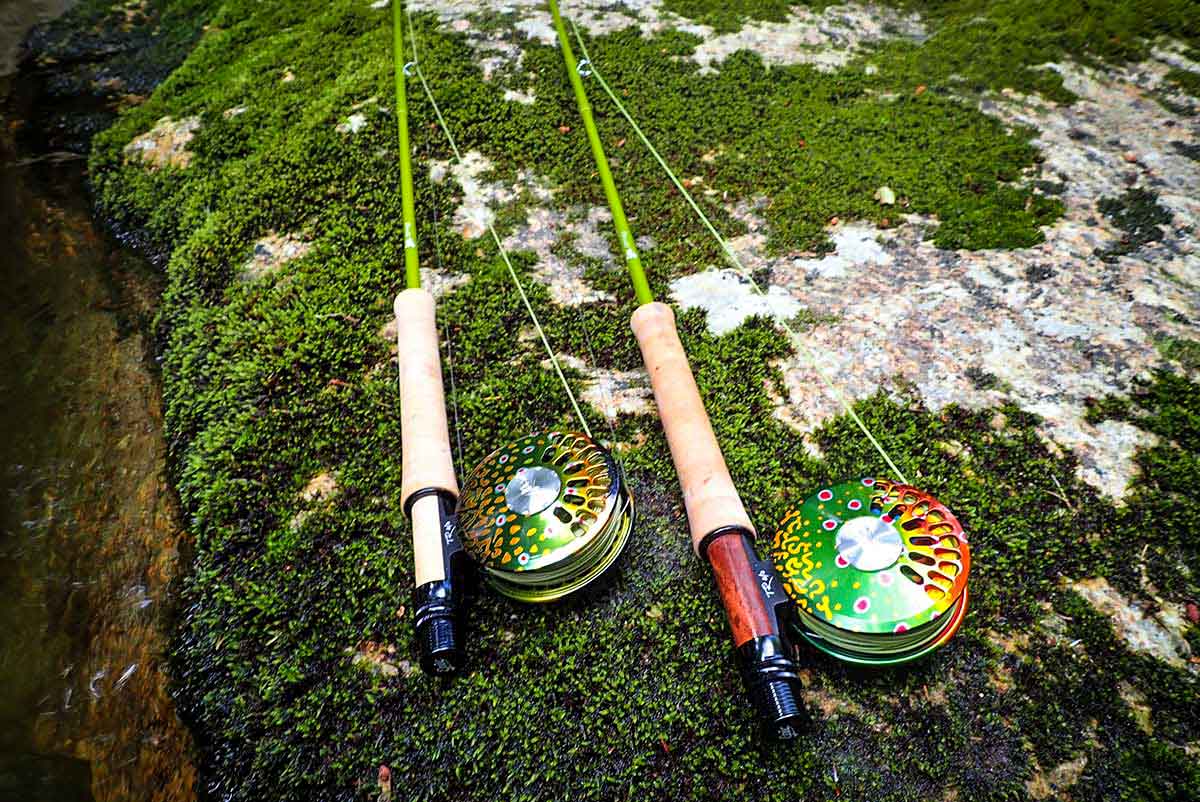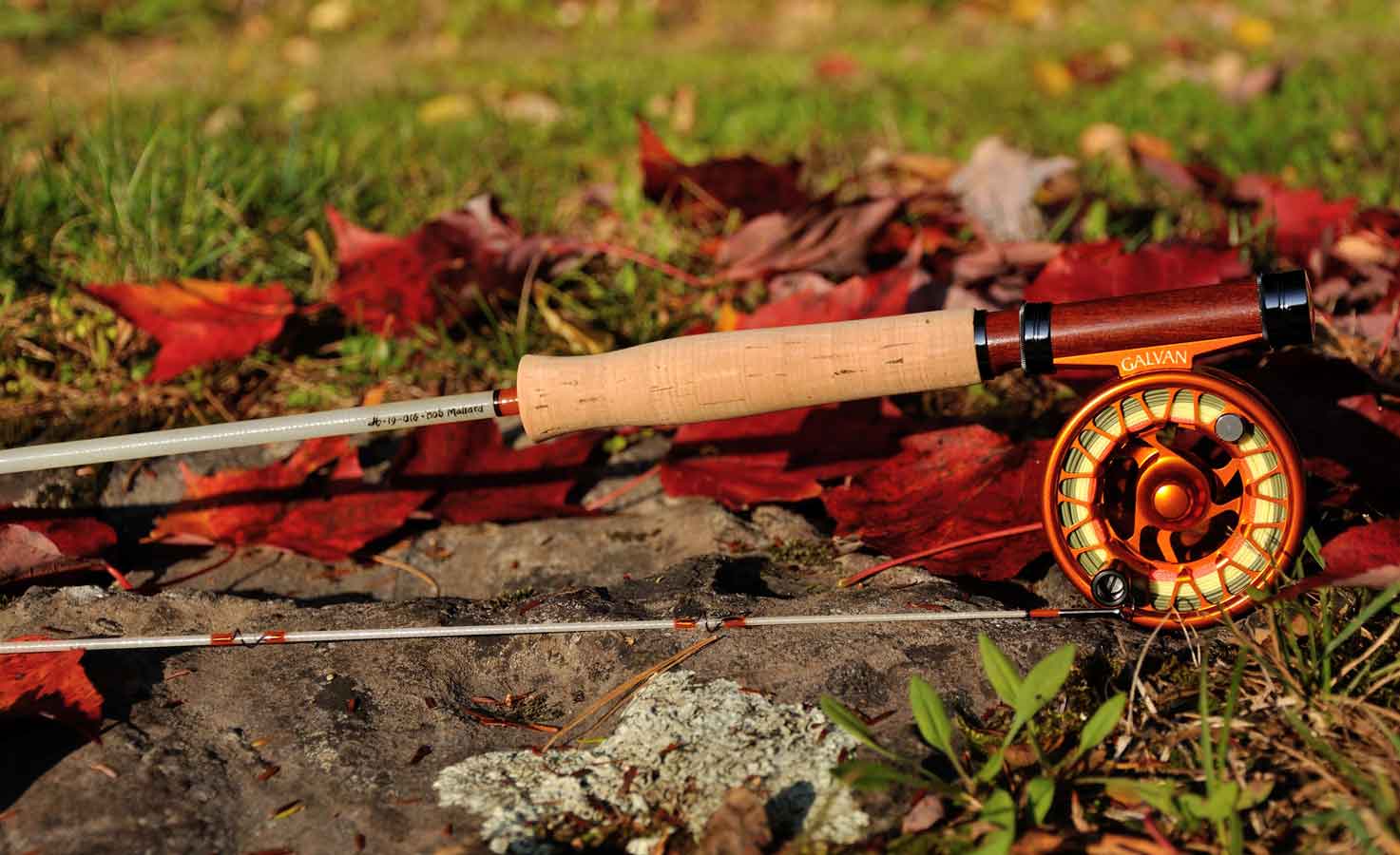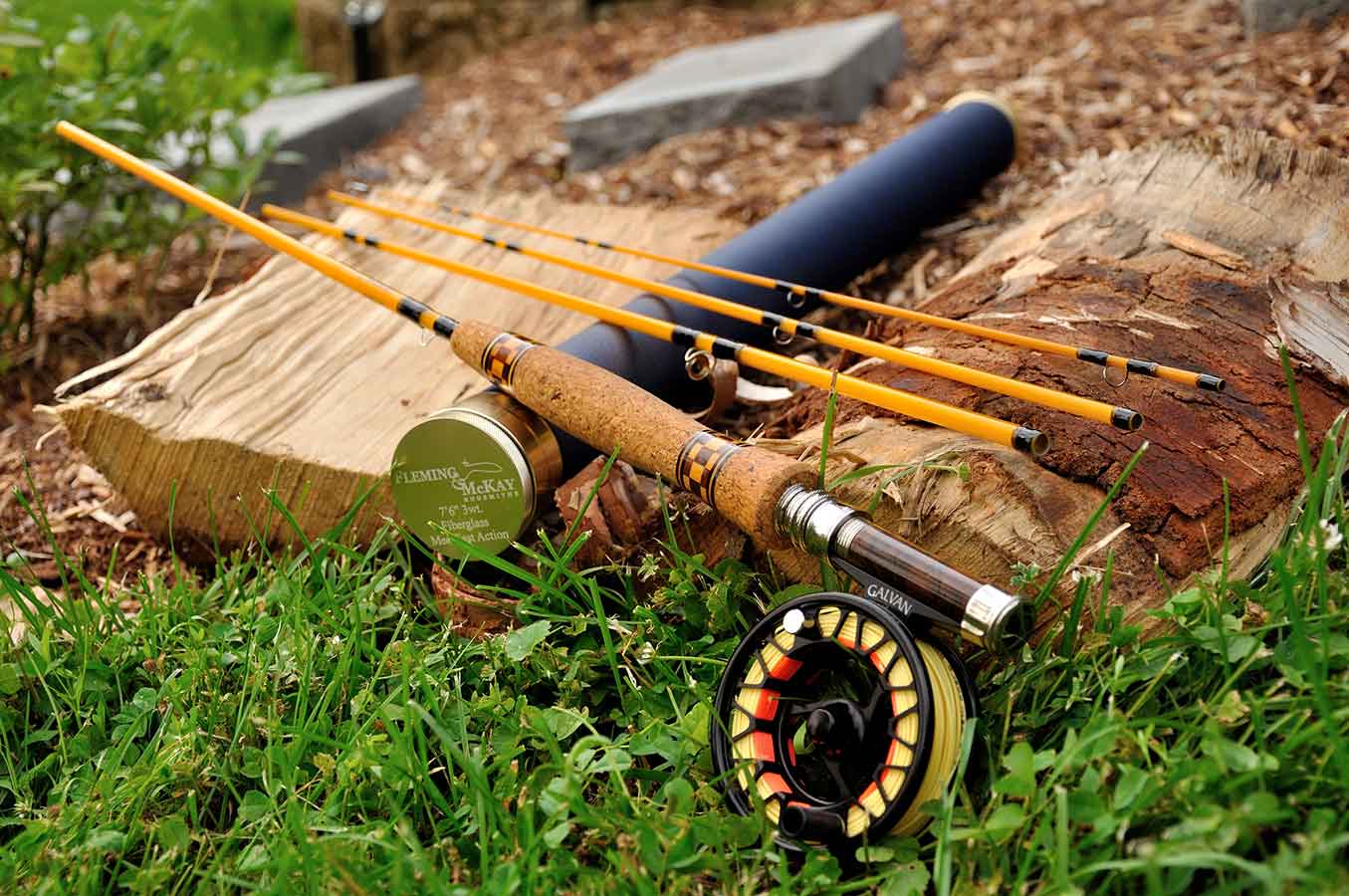“Glass Fly Rods: Why I Believe They’re Here to Stay”

7′ 3wt Fastglass fly rods by Epic
As a 40-year fly fisher, 15-year fly shop owner, and 20-year fly fishing writer, I have seen a lot of fly rods and fly rod trends. Long rods, short rods, fast rods, extra-fast rods, multi-piece rods, 2-handed rods, rods made from bamboo, rods made of boron, rods with built-on reels, rods with no reels, etc., have all had their day in the sun. Some have sustained and some have not.
The reason product trends peak and fall is that many don’t work, or at least well. Once the media hype is over and the rubber meets the road, or boots hit the water, many trendy and previously kudo’d products drop into the abyss, never to be seen again. We used to joke that today’s trend is tomorrow’s pun, and today’s kudo tomorrow’s discontinued product.
Beginning
The first use of fiberglass in a fly rod was to repair a broken bamboo rod. This led to Shakespeare making the first commercially available glass rod, Wonderod, in the late 1940s. I have a print of Boston Red Sox and fly fishing legend Ted Williams on the Miramichi River holding a Wonderod coupled with an equally timeless Pflueger Medalist reel and wearing a pair of vintage Red Ball bootfoot waders.
Like most my age, I grew up fishing fiberglass fly rods: Shakespeare Wonder Rod, Eagle Claw, Daiwa VIP Gold, Kodiak, Fenwick, Orvis Golden Eagle, etc. While functional, they were often heavy, poorly balanced, marginally wrapped, unsightly, and not much fun to cast. So, when graphite fly rods crashed the party, I and many others leaped at the chance to get beyond glass.
Resurgence
After decades of dormancy, glass rods have made a comeback. Like straight-line nymphing, and wet flies tied to imitate emergers, what was old was new again. Anglers who had never touched a fiberglass rod in their life jumped in with both wading boots and bought their first glass rods. Others were rolling their own. And a sub-culture emerged, complete with their own media.
To be fair and clear, today’s fiberglass fly rods are nothing like those I grew up with. They employ modern tapers, are superbly wrapped and finished, and come with quality accouterments. And while classic E-glass is still used, many are made from advanced materials such as S-glass and S2 glass, and unidirectional fibers versus weaves.
Led by new companies like Epic and Blue Halo, industry giants such as Scott and Thomas & Thomas, small companies like JP Ross, as well as myriad custom builders such as Marty Romeo and Fleming & McKay Rodsmiths, today’s fiberglass rod offering is lightyears ahead of what was available just ten or so years ago.

Marty Romeo 5′ 2wt Custom McFarland Wrap
More Than a Passing Trend
What’s different about fiberglass rods than many other fly rod trends, is they work, and quite well. In fact, in some cases, glass rods are the best tool for the job, and by far. And unlike many other trends, the resurgence of glass rods is about more than just tackle. While tackle for the sake of tackle often fails, tackle that addresses specific types of fishing and societal trends is much more likely to succeed.
The Glass Fly Rod Market
While glass rods have gone way beyond small streams and are now used in saltwater and other non-typical applications, you could argue that it started as a result of increased interest in small stream fishing. From there it morphed, and what will and will not remain popular is yet to be determined. But I think small stream fishing, and by default glass, is here to stay.
The fiberglass fly rod market is the primary beneficiary of a relatively new and growing movement that embraces small stream fishing, or what is now referred to as “blue-lining.” Like glass rods themselves, this too is a resurgence of something old, not something completely new. And as I said, it’s only part of what is a much bigger story.
To be fair however, glass rods are still a niche market and likely always will be. But unlike some other fly rod trends I have witnessed, their base appears to be strong and dedicated, and the market sound and stable. To what degree it will grow is unclear, but right now it has momentum, and I for one am glad it does, and for a number of reasons, one of which is what is indirectly driving it.
What’s Driving the Market?
In my opinion, the increased interest in small stream fishing is driven by multiple factors, including crowding, public access, stocking, invasive fish introductions, unreliable fishing, unpredictable conditions, ecological enlightenment, and a desire for a simpler and less competitive and complicated form of recreation.
Many anglers I talk with have grown tired of the ever-present crowds found on many of our larger streams and rivers. While some fish just to feel the tug, others do so to get away from a world that has become way too combative. The last thing they want is a midstream confrontation over encroachment on one’s personal space or angling or boating ethics.
Public access has also become an issue. With more land posting, boating restrictions, pay-to-fish, and other things that restrict our angling, many anglers are looking for places to go where they can fish for free and at will. Thankfully, many of our small trout streams are located on public land such as our national parks, national forests, and state- and municipal-owned properties.
Some anglers have grown tired of stocked fish and what are often unreliable stocked fisheries. They’re sick of rounded tails, shredded fins, and receding gill plates, as well as manufactured hybrids and other mutations, and so-called “trophies” that were living in a hatchery yesterday and delivered to the doorstep today.

Fleming & McKay 7’6″ 3wt Custom CTS Wrap
In many cases, our large streams and rivers are falling victim to invasive fish. Like the fly in the expensive soup, bass in a trout stream leaves a bad taste in the mouth of many anglers. With most invasive fish being warmwater species, our small streams are less susceptible to establishing self-sustaining populations of perch, bass, pike, muskies, roughfish, and baitfish.
Then there is the competitive thing. Some anglers are turned off by what has become an increasingly competitive and complicated sport. More than anything else, fishing is supposed to be fun, and many could care less about bragging boards, fishing competitions, and techniques that are more about catching than fishing. To avoid being part of it, some have retreated to our small streams.
Due to a changing climate, we have seen an increase in high-water events and their intensity, and many of our larger streams and rivers are not as predictable as they once were. My home river, the Kennebec in Maine, is as likely to be unfishable due to high flows as not these days. And rivers like the Bighorn have seen lengthy high water periods that make wading difficult and even dangerous.
The Native Fish Connection
Most important to me personally is the newfound appreciation for wild native fish on the part of many anglers. As a 40-year angler and 20-year native fish advocate, I don’t believe the native fish message has ever been stronger. It’s everywhere you look: License plates, bumper stickers, decals, hats, shirts, art, Facebook pages, websites, focused organizations, etc.
While nonnative fish, and even stocked fish, can offer good recreation, nothing can truly, or should, replace our wild native fish. There is something inherently clean and natural about wild native fish. They belong. They are right. There is no argument against them. Fly fishing for wild native trout represents angling in its purest form. And we almost lost them.
In many states, if you want wild native fish you must look to headwater streams. Even such fishy states as Colorado, Montana, and Idaho have lost their wild native fish from most large streams, rivers, lakes, and ponds to nonnatives and stocking. The east hasn’t fared much better, and in the southeast, other than tailwaters, small streams are pretty much all that’s left.
To bring this all together, the resurgence of fiberglass fly rods is part of a complicated web. It is driven to a high degree by small stream fishing, which is driven by crowding, decreased access, runaway stocking, invasive fish, a desire for simplicity, climate change, and an ecological enlightenment and new appreciation for wild native fish.
Glass fly rods are the right tool for the job when it comes to fishing small streams. And they can hold their own elsewhere as well. The action is perfect for tight quarters and short casts, and the low-modulus material lends itself to short rods and light lines. Plus, glass is fun to fish. In some ways, glass is the big thumbs down to a sport and industry that has drifted dangerously off course.
Will glass fly rods persevere or fall off the map like other tackle trends? That depends on a bunch of other things, as it’s not just about technology. In fact, it’s almost anti-technology. Could trout become relegated to only small streams due to invasive fish and warming water? If so will we shift to other species or move with the trout. For me it would be the latter, and I’ll take my glass rods with me.











